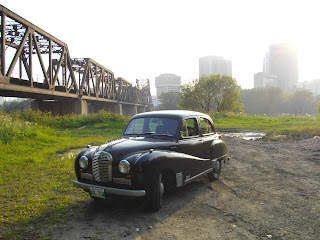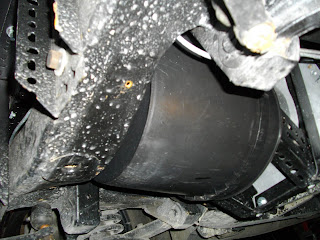
I got my saftey inspection done with no problems, and rolled up about 50 miles on the car and got some ideas on how to fine tune my design. I figure a better location for the controller would be nearer to the front of the vehicle. Taking the controller out out of the car to start on this work, I notice something loose is rolling around inside. Doesn't sound good, so I return the controller for warrantee repair.

I found a new home for my old engine and associated parts with someone I met who is planning to restore an A40. Its good to see these parts may get reused.

The car is out of commision while the contoller issue gets resolved, so I work at making the covers for the battery boxes.

Also after driving the car, I found the transmission to be rather noisy. The transmission mounts are rather hard, so perhaps something more pliable would be better, so here is motor coming out.

Using the opportunity to inspect the coupler. While only after 50 miles, they look like new.

The transmission reinstalled, with mounts made from nested rubber hose.

A larger aluminum plate in the new location, ready for the controller to arrive.

The controler finally arrives, in time for a gathering of classic and special interest cars that happens every Wednesday in downtown Winnipeg during the summer. Its within range, so I brought my car. With the hood open, the absence of an engine draws quite a bit of interest.

















































